2. APPROACH: Theory of Language and Learning
1) The Innate Bio-Program
2) Brain Lateralization
3) Reduction of Stress (Affective Filter)
3. DESIGN
1) Objectives
2) The syllabus
3) Learning activities
4) Roles of learners
5) Roles of teachers
6) Roles of materials
4. PROCEDURE (Sample Lecture)
5. REFERENCE
The left brain can be described as logical, one-track, and cynical. It is used when analyzing, talking, discussing, and so on. The right brain is used when moving, acting, using metaphor, drawing, pointing, and so on.
When language is taught by lecturing or explaining, the cynical left brain is targeted and the information is kept in short term memory (if at all). It is soon forgotten as it never becomes “real” to the student. However, when language is taught actively through movement, the right brain “believes” the information and retains it, in the same way that skills such as swimming or riding a bicycle are remembered long term.
Asher sees TPR as directed to right-brain learning, whereas most second language teaching methods are directed to left-brain learning. Asher holds that the child language learner acquires language through motor movement – a right-hemisphere activity. Right-hemisphere activities must occur before the left hemisphere can process language for production. Similarly, the adult should proceed to language mastery through right-hemisphere motor activities, while the left hemisphere watches and learns. When a sufficient amount of right-hemisphere learning has taken place, the left hemisphere will be triggered to produce language and to initiate other, more abstract language processes.
• analyzing
• critiquing
• discussing
• explaining
• talking
• telling
• acting
• drawing
• games
• gesturing
• metaphor
• physical movements
3) Reduction of Stress (Affective Filter)
Students learn more when they are relaxed. This is because the affective filter, a mental barrier between the students and the information, is raised when students are nervous or uncomfortable. When the affective filter is high, learners find it harder to understand, process, and remember information.
TPR helps reduce the affective filter because it is less threatening than traditional language activities. Students do not have to produce language. Mistakes are unimportant and easily (and painlessly) corrected by the teacher. Language is remembered easily and long-term.
3. DESIGN
1) Objectives
The objectives of Total Physical Response are to teach oral proficiency at a beginning level. And then ultimate aim is to use comprehension as a means to speaking. A TPR course aims to produce learners who are capable of an uninhibited communication that is intelligible to a native speaker. The goals must be attainable through the use of action-based drills in the imperative form.
2) The syllabus
TPR uses a sentence-based syllabus, with grammatical and lexical criteria being primary in selecting teaching items. And Total Physical Response requires initial attention to meaning rather than to the form of items. Grammar is taught inductively.
3) Learning activities
The major class room activities in Total Physical Response are imperative drills. Imperative drills are typically used to elicit physical actions and activity on the part of the learners. Other class room activities include role plays, and slide presentations. Role plays center on everyday situations, such as at the restaurant, bank, gas station or post office.
4) Roles of learners
The major roles of learners in Total Physical Response are listener and performer. They listen attentively and respond physically to commands given by the teacher. Learners are also expected to recognize and respond to novel combinations of previously taught items. They are required to produce novel combinations of their own.
(Brand-New 7th Edition-378 exciting pages)
By James J. Asher
It's like sitting in the front row of a TPR workshop!
- Demonstrates step-by-step how to apply TPR to help children and adults acquire another language without stress.
- More than 150 hours of classroom-tested TPR lessons - can be applied to any language.
- Behind the scenes look at how TRP was developed.
- Answers more than 100 of the most often asked questions about TPR.
2) Brain switching: Learning on the Right Side of the Brain
(2nd Edition, 308 pages)
By James J. Asher
- For fast, stress-free access to languages, mathematics, science and much, much more!
3) Super School of the 21st Century
By James J. Asher
- James J. Asher shows the magic of TPR can be applied to improve every feature of today's schools.
- Shows how to help your students learn anything fast in academics, sports or technology!
- Your students won't want to miss a single class!
- Appropriate for all languages and all ages.
4) The Weird and Wonderful World of Mathematical Mysteries:
(Conversations with famous scientists and mathematicians)
By James J. Asher
- Exclusive - new discovery published here for the first time solves a 2,000 year old mystery that baffled such famous people as Pythagoras, Euclid, Albert Einstein and Sir Isaac Newton. 200 PAGES.
- Dr. Asher successfully removed the fear of learning foreign languages with TPR.
Now he removes the fear of mathematics.
- Conversations with famous scientists and mathematicians reveal their secret strategy for making spectacular breakthroughs by playing with ideas on the right side of the brain.
- Dr. Asher demonstrates how anyone with the basic skills of addition, subtraction, multiplication and division can have a shot at world fame by finding hidden patterns in nature.
5) A Simplified Guide to Statistics for FL/ESL Students and Instructors
By James J. Asher
- Tips for organizing a successful master's thesis or doctoral dissertation
- A must for anyone developing a research project to explore children or adults learning another language

- 오늘 본 자료가 없습니다.
- 배우자선택이론에 근거하여 자신이 어떻게 배우자를 선택하게 되었는지 작성하십시오. (기혼자의 경우 지금의 배우자를 선택하게 된 이유, 비혼자의 경우 현재의 파트너 혹은 과거의 파트너를 어떠한 측면에서 사귀게 되었는지 작성하시면 됩니다. 만약 그게 어려울 경우, 부모님은 어떠한 배우자 선택이론에 근거하여 결혼을 하시게 되었는지 분석해도 좋습니다.)
- 적성검사분석 학부 레포트
- 롯즈의의사결정 분석틀
- 글쓰기(서평쓰기, 개요, 최종본)_원신연 감독의 살인자의 기억법을 감상하고
- [A+자료] 인지치료 Cognitive Therapy 발표 PPT 자료
해당 정보 및 게시물의 저작권과 기타 법적 책임은 자료 등록자에게 있습니다. 위 정보 및 게시물 내용의 불법적 이용,무단 전재·배포는 금지되어 있습니다. 저작권침해, 명예훼손 등 분쟁요소 발견 시 고객센터에 신고해 주시기 바랍니다.



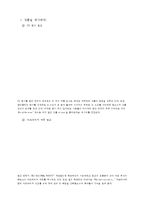
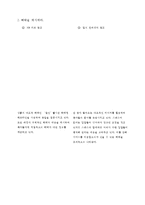
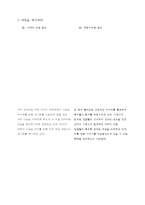
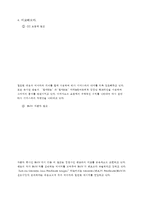
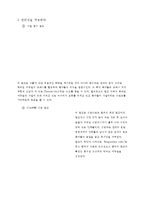
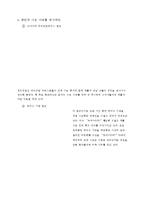

 분야
분야

